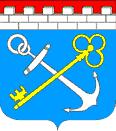
|
Blazons of Saint-Petersburg and Leningrad Oblast Towns
|
![]()
|
Coat of arms of Leningrad Oblast was adopted on December 9, 1997. The description
of the arms: "The Coat of Arms of Leningrad Oblast represents the image of silver anchors
crossed by a gold key on azure field of heraldic shield (the ratio of width to height is 8:9).
In the top of a shield the silver gear wall as a cross-belt on a red field is represented".
|
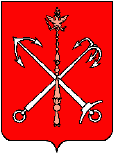 Saint-Petersburg. Adopted on May 7, 1780.
Saint-Petersburg. Adopted on May 7, 1780.
|
The first arms of city Saint-Petersburg has appeared in 1712 on red
banners of Saint-Petersburg regiments. According to picture and description, given in the book
by Viskovatov "The historical description of uniform and arms of Russian army" (SPb, 1841),
it represented "gold flaring heart, under gold crown and silver prince's mantle and
under them two palmaceous branches". At the end of the twentieth years of XVIIIth century
the new arms of Saint-Petersburg - "a scepter and two crossed anchors" - was made.
Frantsisk Santi is considered as its creator. Scepters specified that the city is a capital of
Russian empire, and anchors characterized it as a sea and river port. In 1780 the arms was
completely saved, the form of a shield has varied only. In 1878 the coat of arms of a
Saint-Petersburg province with the same symbolics, but with a standard frame of a shield,
characteristic for province city was authorized: "In a dark red shield a gold imperial scepter
on silver, indirectly crosswise fixed of an anchor and cat (anchor with three teeth). The
shield is crowned with imperial crown and is surrounded by gold oak pages, joint by Andrey belt".
|
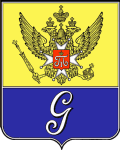 Gatchina. Adopted on December 13, 1800.
Gatchina. Adopted on December 13, 1800.
 Kingisepp (Yamburg). Adopted on May 7, 1780.
Kingisepp (Yamburg). Adopted on May 7, 1780.
|
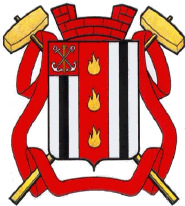
|
Kolpino (Kolpinsky Posad). Adopted on September 23, 1883.
|
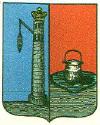 Kronshtadt. Adopted on May 7, 1780.
Kronshtadt. Adopted on May 7, 1780.
|
The arms of city Kronstadt - beacon and copper on an island -
for the first time has appeared in 1730. The beacon was placed on an island even before
construction of a fortress, and copper - a speaking part of the arms of city located on an
island Kotlin (from the Russian word "kotel" - copper).
|
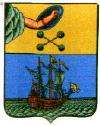 Lodeinoe Pole. Adopted on October 4, 1788.
Lodeinoe Pole. Adopted on October 4, 1788.
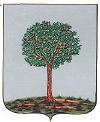 Lomonosov (Oranienbaum). Adopted on May 7, 1780.
Lomonosov (Oranienbaum). Adopted on May 7, 1780.
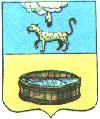 Luga. Adopted on May 21, 1781.
Luga. Adopted on May 21, 1781.
|
It is accepted to consider that the city Luga had two arms: one -
of Pskov province, other - of Kostroma province. Actually city Luga posesses only first arms,
the second coat of arms belongs to city Lukh of Kostroma province
(nowadays - Ivanovo Oblast). The inaccuracy has arisen because of a misprint in full code of
laws of Russian empire. There, in the decree about establishment Kostroma province
(September 5, 1778), on the basis of which the arms of district cities were made, was told, that
"city Lukh with district" would belong to Kostroma province, and during copying in
the descriptions of the arms of Kostroma province (March 29, 1779) instead of "Lukh"
was written "Luga". The error has taken place, probably, because of similarity of the names of
cities. If take a look on a map of Russia, it will become clear, that the city Luga could not
proceed from Pskov province to Kostroma province, because three other provinces
(Novgorod, Tver and Yaroslavl) are situated between them.
|
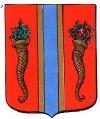 Novaya Ladoga. Adopted on August 16, 1781.
Novaya Ladoga. Adopted on August 16, 1781.
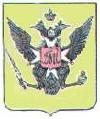 Pavlovsk. Adopted on January 18, 1801.
Pavlovsk. Adopted on January 18, 1801.
 Petrodvorets (Petergof)
Petrodvorets (Petergof)
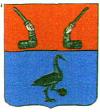 Priozersk (Keksgolm). Adopted on October 10, 1788.
Priozersk (Keksgolm). Adopted on October 10, 1788.
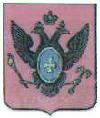
|
Pushkin (Sofia; in 1808 Sofia was united with Tsarskoe Selo and received its name). Adopted on May 7, 1780.
|
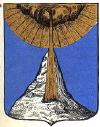 Rozhestveno. Adopted on May 7, 1780.
Rozhestveno. Adopted on May 7, 1780.
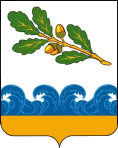 Sestroretsk. Adopted on February 23, 2000.
Sestroretsk. Adopted on February 23, 2000.
|
The authors of Sestroretsk blazon are Konstantin Mochenov, Yury Mochenov and Sergey Isaev.
|
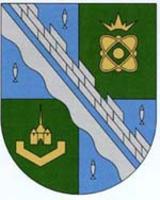 Sosnovy Bor. Adopted on December 16, 1996.
Sosnovy Bor. Adopted on December 16, 1996.
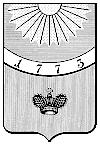 Tikhvin (old blazon). Adopted on July 10, 1773.
Tikhvin (old blazon). Adopted on July 10, 1773.
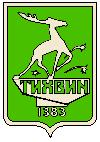 Tikhvin (new blazon). Adopted in 1968.
Tikhvin (new blazon). Adopted in 1968.
|
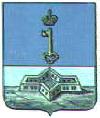
|
Shlisselburg (Oreshek, Noteburg, Petrokrepost). Adopted on May 7, 1780.
|
|
The meaning of an emblem of the city Shlisselburg arms - key
above a fortress - is connected to the city name: "Shlisselburg" in translation with German
means "key-city". Such name was given to city by Petr I at once after its capture
by Russian army on October 11, 1702. Up to it, since 1611, its name was Noteburg -
"nut-city", from the old Russian name of this fortress, based in 1323, - Oreshek (nut).
Such city blazon for the first time has appeared in 1730. Up to it since 1712 Shlisselburg
had other emblem - "a columns decorated with anchors and noses of the ships".
|
 Vsevolozhsk
Vsevolozhsk
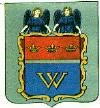 Vyborg. Adopted on October 4, 1788.
Vyborg. Adopted on October 4, 1788.


Main Page |
Blazons of Provinces |
Home Page

 Saint-Petersburg. Adopted on May 7, 1780.
Saint-Petersburg. Adopted on May 7, 1780. Gatchina. Adopted on December 13, 1800.
Gatchina. Adopted on December 13, 1800. Kingisepp (Yamburg). Adopted on May 7, 1780.
Kingisepp (Yamburg). Adopted on May 7, 1780.
 Kronshtadt. Adopted on May 7, 1780.
Kronshtadt. Adopted on May 7, 1780. Lodeinoe Pole. Adopted on October 4, 1788.
Lodeinoe Pole. Adopted on October 4, 1788. Lomonosov (Oranienbaum). Adopted on May 7, 1780.
Lomonosov (Oranienbaum). Adopted on May 7, 1780. Luga. Adopted on May 21, 1781.
Luga. Adopted on May 21, 1781. Novaya Ladoga. Adopted on August 16, 1781.
Novaya Ladoga. Adopted on August 16, 1781. Pavlovsk. Adopted on January 18, 1801.
Pavlovsk. Adopted on January 18, 1801. Petrodvorets (Petergof)
Petrodvorets (Petergof) Priozersk (Keksgolm). Adopted on October 10, 1788.
Priozersk (Keksgolm). Adopted on October 10, 1788.
 Rozhestveno. Adopted on May 7, 1780.
Rozhestveno. Adopted on May 7, 1780. Sestroretsk. Adopted on February 23, 2000.
Sestroretsk. Adopted on February 23, 2000. Sosnovy Bor. Adopted on December 16, 1996.
Sosnovy Bor. Adopted on December 16, 1996. Tikhvin (old blazon). Adopted on July 10, 1773.
Tikhvin (old blazon). Adopted on July 10, 1773. Tikhvin (new blazon). Adopted in 1968.
Tikhvin (new blazon). Adopted in 1968.
 Vsevolozhsk
Vsevolozhsk Vyborg. Adopted on October 4, 1788.
Vyborg. Adopted on October 4, 1788.